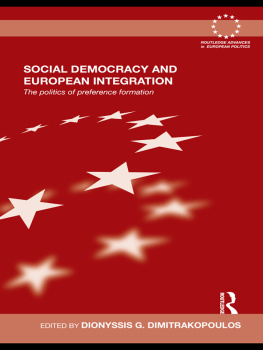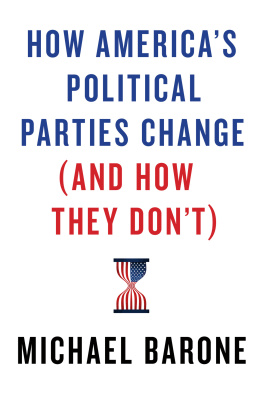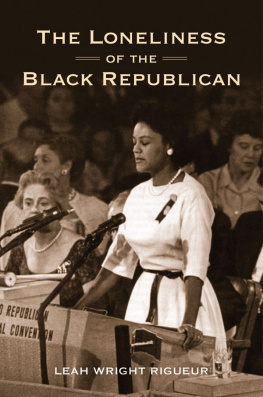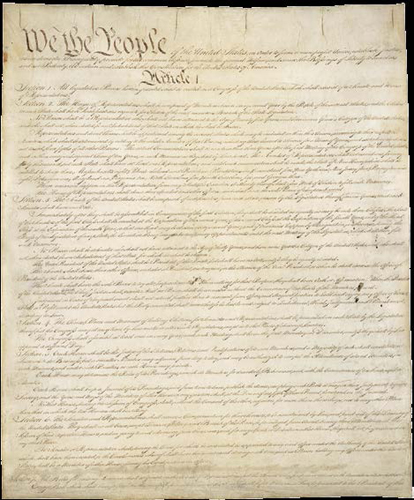Contents
Published in 2020 by The Rosen Publishing Group, Inc. 29 East 21st Street, New York, NY 10010
Copyright 2020 by The Rosen Publishing Group, Inc.
All rights reserved. No part of this book may be reproduced in any form without permission in writing from the publisher, except by a reviewer.
First Edition
Editor: Jane Katirgis
Book Design: Tanya Dellaccio
Photo Credits: Cover (right), pp. 13, 15 (main) Everett Historical/Shutterstock.com; cover (left), pp. 7 (Founding Fathers), 17 (Lyndon B. Johnson) Bettmann/Getty Images; p. 5 (main) Alex Wong/Getty Images News/Getty Images; p. 5 (inset) https://upload.wikimedia.org/wikipedia/commons/6/6c/Constitution_of_the_United_States%2C_page_1.jpg; p. 7 (Alexander Hamilton) https://upload.wikimedia.org/wikipedia/commons/0/05/Alexander_Hamilton_portrait_by_John_Trumbull_1806.jpg; p. 7 (Thomas Jefferson) https://upload.wikimedia.org/wikipedia/commons/0/07/Official_Presidential_portrait_of_Thomas_Jefferson_%28by_Rembrandt_Peale%2C_1800%29.jpg; p. 9 (Democrat and Republican symbols) SFerdon/Shutterstock.com; p. 9 (Andrew Jackson) https://upload.wikimedia.org/wikipedia/commons/4/43/Andrew_jackson_head.jpg; p. 11 https://upload.wikimedia.org/wikipedia/commons/9/98/Republican_presidential_ticket_1864b.jpg; p. 15 (FDR) https://upload.wikimedia.org/wikipedia/commons/3/30/FDR_1944_Color_Portrait.tif; p. 17 (Grand Coulee Dam) Edmund Lowe Photography/Shutterstock.com; p. 19 (debate) Joseph Scherschel/The LIFE Picture Collection/Getty Images; p. 19 (family watching TV) Time Life Pictures/The LIFE Picture Collection/Getty Images; p. 21 (Supreme Court justices) Diana Walker/the LIFE Images Collection/Getty Images; p. 21 (Sandra Day OConnor) Courtesy of the National Archives; p. 23 Dirck Halstead/The LIFE Images Collection/Getty Images; p. 25 https://upload.wikimedia.org/wikipedia/commons/9/98/Aldrin_Apollo_11_original.jpg; p. 27 Douglas Graham/CQ-Roll Call Group/Getty Images; p. 29 Hill Street Studios/Blend Images/Getty Images.
Cataloging-in-Publication Data
Names: Bard, Mariel. | Bard, Jonathan.
Title: Republicans and Democrats / Mariel and Jonathan Bard.
Description: New York : PowerKids Press, 2019. | Series: Opponents in American history | Includes glossary and index.
Identifiers: ISBN 9781538345467 (pbk.) | ISBN 9781538343708 (library bound) | ISBN 9781538345474 (6pack)
Subjects: LCSH: Republican Party (U.S. : 1854- )--Juvenile literature. | Democratic Party (U.S.)--Juvenile literature. | United States--Politics and government--20th century--Juvenile literature.
Classification: LCC JK226.B36 2019 | DDC 324.2734--dc23
Manufactured in the United States of America
CPSIA Compliance Information: Batch #CSPK19. For Further Information contact Rosen Publishing, New York, New York at 1-800-237-9932
WHAT IS A POLITICAL PARTY?
Each year, Americans vote in local, state, or national elections. The candidates running for office all want to represent not only their towns or states but also the people of their community. To get enough support to win an election, a candidate often needs help from a political party, which is a group of people who share similar ideas and beliefs and who work together to gain control of government positions.
Political parties have two major goals: to promote candidates in elections and to write and support laws that support and enforce their ideas and beliefs. The more candidates a political party has in power, the easier it is to pass the laws they want. Today, the United States has two major political partiesthe Republican Party and the Democratic Party.
WHAT IS A DEMOCRACY?
Many people refer to the United States as a democracy. A democracy is a type of government in which citizens have elections to decide how theyre governed. In America, we vote for public officials to represent us. These elected officials debate and create the laws we all live by. This form of government is also a constitutional republic.
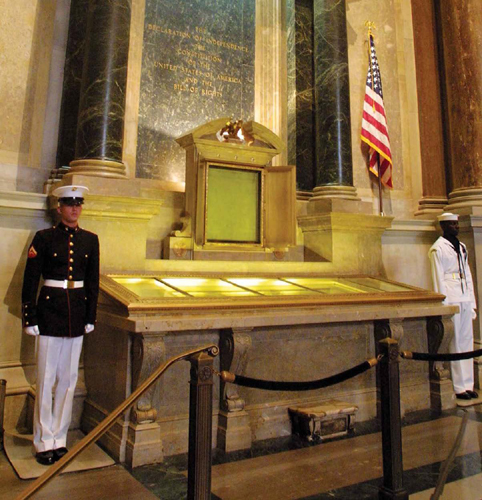
THE U .S . CONSTITUTIONRATIFIED, OR APPROVEDIN 1788, EXPLAINS HOW THE GOVERNMENT RUNS AND HOW POLITICIANS ARE ELECTED . YOU CAN SEE THE CONSTITUTION ON DISPLAY AT THE NATIONAL ARCHIVES IN WASHINGTON, D .C .
GET THE PARTIES STARTED
Long before todays Democrats and Republicans, other political parties held power in the United States. The first parties to form were the Federalists, led by Alexander Hamilton and formed in 1791, and the Democratic-Republicans, led by Thomas Jefferson and formed in 1792. (The latter was first called the Republican Party.)
The Federalists wanted a strong federal, or national, government, believing that it would be more effective for the new country. The Federalists were often supported by wealthy merchants, bankers, and other businessmen, mostly from the northern United States. The Democratic-Republicans disagreed. They wanted a small federal government that didnt interfere much with citizens lives, and they believed each state should be in charge of its own citizens. Democratic-Republicans were supported mostly by farmers and planters.
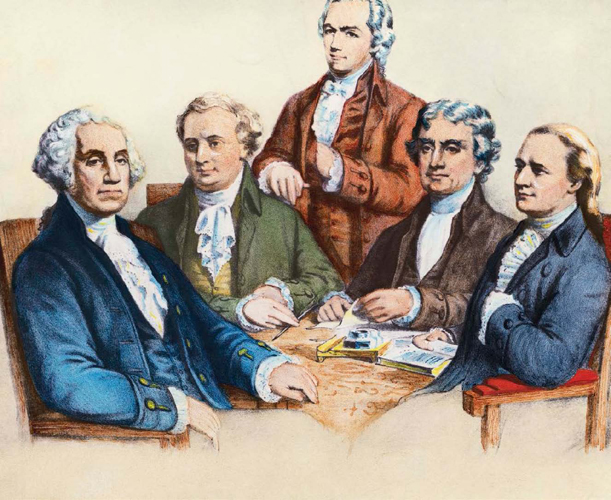
GEORGE WASHINGTON
JEFFERSON AND HAMILTON WERE MEMBERS OF GEORGE WASHINGTONS CABINET, PICTURED HERE .
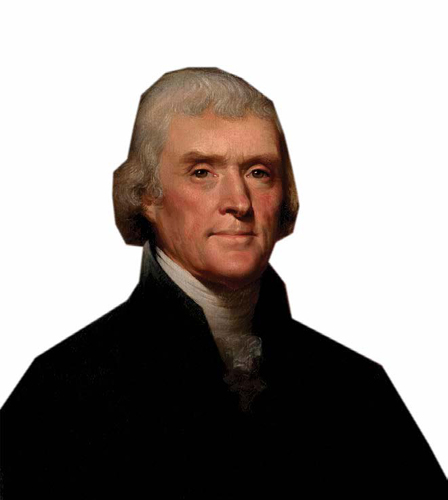
THOMAS JEFFERSON
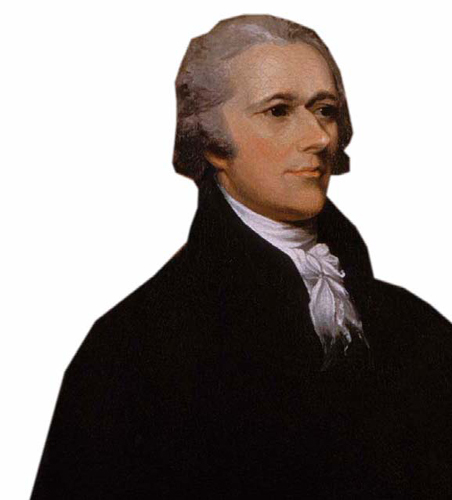
ALEXANDER HAMILTON
HEAD TO HEAD
The two party leaders, Hamilton and Jefferson, didnt get along at all. Their disagreement over the governments size and power is featured in a song in the hit Broadway musical Hamilton.
JACKSONIAN DEMOCRATS
The first two political parties didnt last long. The presidential election of 1820 brought the collapse of the Federalist Party. Soon after, the Democratic-Republican Party split. Many members followed Senator Andrew Jackson, who started a new party in 1828. It later became officially known as the Democratic Party.
Jackson wanted to reduce the federal governments power, to move it away from the rich elite of the northeast states and return power to what he considered the common people. He became very popular and, by 1828, won the presidential election by a large majority. Right before his election, a number of states got rid of rules that required white men to own property before they could vote, and Jackson appealed to these white men.
THE WHIG PARTY
When the Democratic-Republicans split, some joined former Federalists and Democrats who didnt like Jackson to form the Whig Party. This political party was a major player in U.S. politics from about 1834 to 1854. William Henry Harrison, the ninth president of the United States, was the first Whig president. Zachary Taylor and Millard Fillmore, the 12th and 13th presidents respectively, were also members of the Whig Party, but by the time Fillmore left office in 1853, the party had split.






